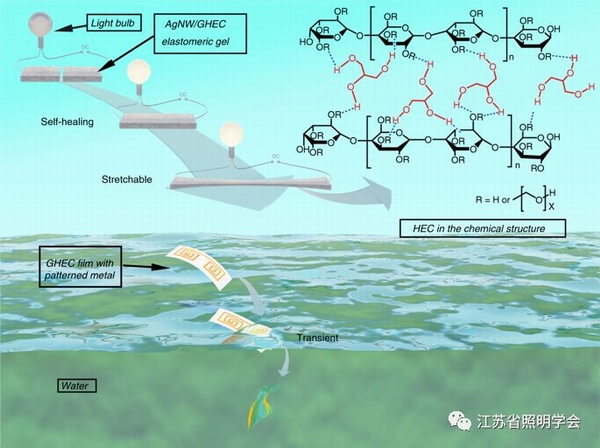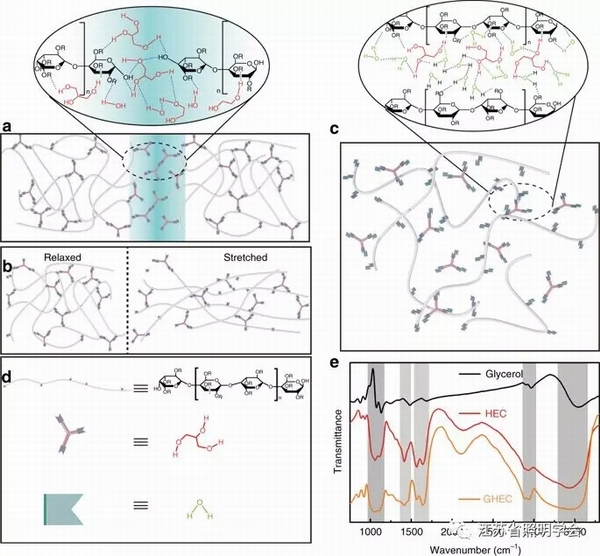来源:微系统与纳米工程

概述:大分子弹性体凝胶具有可拉伸、可自我修复能力和可控降解的特性,在柔性电子器件领域具有很好的应用前景。 可穿戴电子产品是个人智能健康监测的主要研究热点。然而,目前面临的一个主要问题是,当材料在使用的过程中持续拉伸时,如何抵抗和修复材料所受损害。目前,中国科学院苏州纳米技术与纳米仿生研究所Ting Zhang团队研发了一种高分子弹性体凝胶,其中小分子甘油和羟乙基纤维素之间的氢键具有可拉伸、可自我修复和可控降解的特点。研究者称,他们的研发材料有可能可以用于自愈导体、瞬态晶体管和机器人电子皮肤。 A macromolecular elastomeric gel offers stretchability, self-healing and controllable degradation, suggesting its potential for flexible electronic devices. Wearable electronics are of major interest for personal and smart health monitoring. A major challenge they face however is how to both resist and heal damage as a result of continuous stretching in service. Now, a team led by Ting Zhang from Suzhou Institute of Nano-tech and Nano-bionics, Chinese Academy of Sciences, demonstrates a macromolecular elastomeric gel, in which hydrogen bonding between small molecule glycerol and hydroxyethylcellulose imparts the abilities of stretching, self-healing and controllable degradation in the resulting elastomer. The authors demonstrate the potential of their material as self-healing conductors, transient transistors and as electronic skin for robots.